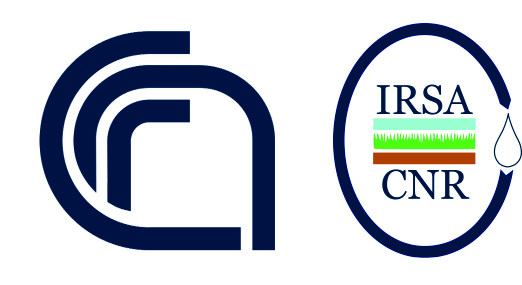Scheda di dettaglio – i prodotti della ricerca
| Dato | Valore |
|---|---|
| Title | Microbial responses to polycyclic aromatic hydrocarbon contamination in temporary river sediments: Experimental insights |
| Abstract | Temporary rivers are characterized by dry-wet phases and represent an important water resource in semi-arid regions worldwide. The fate and effect of contaminants have not been firmly established in temporary rivers such as in other aquatic environments. In this study, we assessed the effects of sediment amendment with Polycyclic Aromatic Hydrocarbons (PAHs) on benthic microbial communities. Experimental microcosms containing natural (Control) and amended sediments (2 and 20 mg PAHs kg-1) were incubated for 28 days. The PAH concentrations in sediments were monitored weekly together with microbial community structural (biomass and phylogenetic composition by TGGE and CARD-FISH) and functional parameters (ATP concentration, community respiration rate, bacterial carbon production rate, extracellular enzyme activities). The concentration of the PAH isomers did not change significantlywith the exception of phenanthrene. No changeswere observed in the TGGE profiles, whereas the occurrence of Alpha- and Beta-Proteobacteria was significantly affected by the treatments. In the amended sediments, the rates of carbon production were stimulated together with aminopeptidase enzyme activity. The community respiration rates showed values significantly lower than the Control after 1 day from the amendment then recovering the Control values during the incubation. A negative trend between the respiration rates and ATP concentrationwas observed only in the amended sediments. This result indicates a potential toxic effect on the oxidative phosphorylation processes. The impoverishment of the energetic resources that follows the PAH impact may act as a domino on the flux of energy from prokaryotes to the upper level of the trophic chain, with the potential to alter the temporary river functioning. |
| Source | Science of the total environment 541, pp. 1364–1371 |
| Keywords | microbial communitiessedimentstemporary riversmicrobial processespolyciclic aromatic hydrocarbon PAH |
| Journal | Science of the total environment |
| Editor | Elsevier, Lausanne ;, Paesi Bassi |
| Year | 2016 |
| Type | Articolo in rivista |
| DOI | 10.1016/j.scitotenv.2015.09.144 0048-9697 |
| Authors | Annamaria Zoppini; Nicoletta Ademollo; Stefano Amalfitano; Silvio Capri; Patrizia Casella; Stefano Fazi;Juergen Marxsen; Luisa Patrolecco |
| Text | 339880 2016 10.1016/j.scitotenv.2015.09.144 0048 9697 Scopus 2 s2.0 84981202534 ISI Web of Science WOS WOS 000365289300137 microbial communities sediments temporary rivers microbial processes polyciclic aromatic hydrocarbon PAH Microbial responses to polycyclic aromatic hydrocarbon contamination in temporary river sediments Experimental insights Annamaria Zoppini; Nicoletta Ademollo; Stefano Amalfitano; Silvio Capri; Patrizia Casella; Stefano Fazi;Juergen Marxsen; Luisa Patrolecco Istituto di Ricerca Sulle Acque, Consiglio Nazionale delle Ricerche IRSA CNR , Via Salaria km 29.300, CP10, 00015 Monterotondo, Roma, Italy; Limnologische Fluss Station des Max Planck Instituts fur Limnologie, Schlitz, Germany and Institut fur Allgemeine und Spezielle Zoologie, Tierokologie, Justus Liebig Universitat, Gießen, Germany Temporary rivers are characterized by dry wet phases and represent an important water resource in semi arid regions worldwide. The fate and effect of contaminants have not been firmly established in temporary rivers such as in other aquatic environments. In this study, we assessed the effects of sediment amendment with Polycyclic Aromatic Hydrocarbons PAHs on benthic microbial communities. Experimental microcosms containing natural Control and amended sediments 2 and 20 mg PAHs kg 1 were incubated for 28 days. The PAH concentrations in sediments were monitored weekly together with microbial community structural biomass and phylogenetic composition by TGGE and CARD FISH and functional parameters ATP concentration, community respiration rate, bacterial carbon production rate, extracellular enzyme activities . The concentration of the PAH isomers did not change significantlywith the exception of phenanthrene. No changeswere observed in the TGGE profiles, whereas the occurrence of Alpha and Beta Proteobacteria was significantly affected by the treatments. In the amended sediments, the rates of carbon production were stimulated together with aminopeptidase enzyme activity. The community respiration rates showed values significantly lower than the Control after 1 day from the amendment then recovering the Control values during the incubation. A negative trend between the respiration rates and ATP concentrationwas observed only in the amended sediments. This result indicates a potential toxic effect on the oxidative phosphorylation processes. The impoverishment of the energetic resources that follows the PAH impact may act as a domino on the flux of energy from prokaryotes to the upper level of the trophic chain, with the potential to alter the temporary river functioning. 541 Published version https //www.sciencedirect.com/science/article/abs/pii/S0048969715308019 Microbial responses to polycyclic aromatic hydrocarbon contamination in temporary river sediments Experimental insights Zoppini_et_al_STOTEN_2106.pdf Articolo in rivista Elsevier 0048 9697 Science of the total environment Science of the total environment Sci. total environ. CASELLA PATRIZIA luisa.patrolecco PATROLECCO LUISA stefano.fazi FAZI STEFANO stefano.amalfitano AMALFITANO STEFANO nicoletta.ademollo ADEMOLLO NICOLETTA annamaria.zoppini ZOPPINI ANNAMARIA silvio.capri CAPRI SILVIO MIRAGE Mediterranean Intermittent River Management TA.P04.032.002 Ruolo delle comunita microbiche nei cicli biogeochimici e nella degradazione degli inquinanti |
